- Home
- Herman Melville
Billy Budd and Other Stories Page 2
Billy Budd and Other Stories Read online
Page 2
To enter that story’s world, one enters a woman’s body at her loins—the “Dantean gateway” at “the Black Notch” in a “Plutonian” hollow called “the Devil’s Dungeon” that leads to “Blood River.” Melville employs Gothic images of ruined and decaying structures past which we are led to a paper mill. So we are dealing with female biology, male fear of it, hell, gothic terror, and paper.
Our narrator tells us that he is a “seedsman,” that when the seeds he mails out are in paper folded into envelopes—he has come to buy more paper—the packets of seeds “assume not a little the appearance of business-letters ready for the mail.” And we are back to letters, dead letters, the fiction that constitutes Melville’s correspondence with the world.
The story starts out in whiteness, the menacing whiteness of Moby-Dick, for all is white vapor, the snow of January, the white walls of the mill, the paper itself. In a factory scene that Kafka might have envied and that Dickens could have written, the narrator confronts this sight: “At rows of blank-looking counters sat rows of blank-looking girls, with blank, white folders in their blank hands, all blankly folding blank paper.” It is an industrial nightmare, and a writer’s nightmare—especially if he is compelled to write because of inner need, or economics, or both.
If the writer thinks of the mailing-out of seeds as, at once, an artistic need, an economic coercion, an expense of spirit, and an invitation to the production of babies who whip the cycle of responsibility round again, he might at this point tie the paper and seed images to the sexual toils he escaped in “Paradise” and slunk through at the Eve’s opening of “Tartarus.” Melville does. In the very next paragraph we get “some huge frame of ponderous iron, with a vertical thing like a piston periodically rising and falling upon a heavy wooden block. Before it—its tame minister—stood a tall girl, feeding the iron animal with half-quires of rose-hued notepaper....”
Thus, animal or biological pistoning—the act of sex itself—and the ceaseless sexual cycle our narrator (and Melville) cowers before, becomes an “iron animal,” a force that cannot be resisted—and it is a product of nature and of thinking man. The paper it prints bears a wreath of roses, like the frightening birthmark on the pink cheek in Hawthorne’s story. Cruel scythes cut paper (as cruel saws have made stumps of the trees in the valley), paper pulp is a white river suspiciously sperm- and egglike as it flows into a room “stifling with a strange, blood-like abdominal heat.”
In the confusion of biology and writer’s imagination, writer’s need and domestic requirements, in the final room of the production process (it is presided over, as if a delivery room, by a woman who was a nurse), the narrator speculates about what could come to be written on all the blank paper he sees. These ruminations evoke those of the narrator of Bartleby, for he considers “love-letters, marriage certificates, bills of divorce, registers of births, death-warrants”: much, in other words, that might have been on Melville’s mind; these documents are the skeleton of what he works at. And then the narrator cites Locke and his comparison of the human mind at birth to a blank sheet of paper—at which point the writer is not only harassed bread-winner, but a mother as well, since his writings are babies as much as babies become the world’s blank paper to be scribbled upon.
“Time presses me,” the seedsman puns as he leaves: it makes him jump to its bony tune, but it also writes his history upon his own soul. He speaks as all men—the “Ah, humanity!” of Bartleby-and as the writer, printed upon even as he imprints his inventions on paper, wraps his seeds (both art and life) and mails them out, hoping for mail in response.
If these are stories of the interior Melville, perhaps the triumph of this period is Benito Cereno (1855), a story that is very much about externalities—or seems to be. Like Bartleby, Benito Cereno excites great writing by Melville, and, like Bartleby, it suggests that the obvious is really enigma.
It is 1799, and an American merchantman, commanded by Captain Delano, lies near an island off Chile. The sea is “gray,” the swells “lead,” the sky “gray”; the “gray” fowl fly through “troubled gray vapors,” and the scene is summarized by “Shadows present, foreshadowing shadows to come.” So the reader is alerted that he will have to read this world and interpret the grays. He is further warned that what he sees are shadows; what casts them is hidden and the reader must peer: the story is an exercise in, and an essay about, dramatic irony. As much as the subject is slavery and revolution, it is also perception and invention; it is about fiction, the successes and failures and tactics of which are very much on Melville’s mind.
Delano is described from the start as having a “singularly undistrustful good-nature,” and is virtually incapable of “the imputation of malign evil in man.” From the start, Melville wants us to know that Delano misreads the world. So he resorts to the language of Gothic romance. The slave ship looks like a “monastery after a thunder storm”; figures aboard her resemble “Black Friars pacing the cloisters”; the vessel is reminiscent of “superannuated Italian palaces,” and her galleries evoke “tenantless balconies hung over the sea as if it were the grand Venetian canal.” Delano is placed among the settings in which virgins are pursued by fright-figures, and he should be at home—for he is, in terms of the evil and cruelty that Melville wishes to note, quite virginal.
Gothic conventions not only easily signal fright—we may perceive them; Delano cannot—but can serve to remind us at every turn that dying Europe, the worst of it, encounters the most naive and imperceptive rawness of the New World. Apocalyptic thoughts bring out the best in Melville, who swims in them as in the sea. So we have such poetry, about a ship, as “while, like mourning weeds, dark festoons of sea-grass slimily swept to and fro ... with every hearse-like roll of the hull.”
Messages do not get through. And so Delano, maddeningly, scarily, cannot overcome his racism and innocence and see past the virtual tableaux vivants arranged for his benefit by the rebel slaves under Babo. The clues that strike us at once are misinterpreted in multiples by Delano. And then the awful symbol, in a story rife with symbols—puzzling rope knots, razors-at-throat—is uncovered. The ship’s figurehead is revealed to be a human skeleton, that of a partner in the slave ship. And we are warned by Melville that what seem to be only symbols may be representations of what’s actual, that language carries a cargo of the real, and that fiction is a matter of life and death.
The story slips without faltering into another convention, the “true” document that creates verisimilitude (as in the case of Poe’s “MS. Found in a Bottle,” or, closer to home, Hawthorne’s “discovery” of The Scarlet Letter manuscript). The statement by Benito Cereno, a seeming transcript, gives the European account of the slave rebellion, suggests to us how complicated and multifold any actuality is—how difficult to comprehend or relate—and serves to supply small, shuddery details. So we see, for example, that the original figurehead had been a wooden Christopher Columbus; the discoverer (as he was then thought to be, of course) of the New World is replaced by the Old World’s grinning corpse: slavery becomes the emblem of an inescapable fact—that we are haunted by our past, that the New Eden is not free of the old evils, that, as Melville complained to Hawthorne, “the malicious Devil is forever grinning in upon me.”
A brief third section follows Cereno’s testimony. It contains warnings inferred by Melville (and so many others) concerning the social conditions that will ignite the Civil War. It also offers another, a larger and historical, way of examining the events of the story. And it reminds us how, throughout the first part, we saw menace between the slave Babo and his master (then prisoner) Cereno, while Delano saw affection. Delano saw mastery, and we saw captivity. When Benito Cereno’s “symbol of despotic command” is examined, it is seen not to be a sword, “but ghost of one,” its scabbard “artificially stiffened.” Melville does not, I think, speak here only of command, but of men seen as joined by affection who are later revealed to be acting in reversal of their customary relationships (the more power
ful obeys, the slave commands). Melville joins notions of political power and emotional liaison, and not only to warn us that slaves rise up. The metaphor works in reverse as well, I think, and we are instructed that lovers are slaves and masters, that men can be unmanned by love (the limp scabbard), and can, as in the case of wan Don Cereno, even die of it.
The warning note is sounded again as Delano points to a sky he names as “blue,” but which Cereno cannot acknowledge; to him, it is the gray, perhaps, of the story’s opening. The shadows of that early passage are pointed at again as Delano says, “You are saved: what has cast such a shadow upon you?” Cereno answers, “The negro,” and so warns a society of its sin and then its price—only then are we told of the empty scabbard—and points as well to Babo, who took Cereno’s soul in partial payment for his freedom. The shadow is national, cultural, and also particular: Cereno dies, as did his partner.
Babo is the genius of the story—compare his invention, his gift for creating a shipwide fiction, to Delano’s good dullness—and his head, “that hive of subtlety,” is taken from his body. It is his brain the white men fear. He is further reduced by this barbarism, and yet he becomes more of a threat. He stares at the white man from the post on which his head is impaled. He stares at the Old World and the New Eden, at unmanned Cereno, at church and monastery, storyteller and reader. And he stares them down. He began as a man and became a curse. And his message does get through.
And now we need to move ahead, through Melville’s writing and nonwriting lifetime. Hawthorne, whom Melville loved and lost, has risen. He is America’s second-most powerful diplomat, the consul in Liverpool. (He was also Franklin Pierce’s Bowdoin friend, and the author of his campaign biography.) Melville, failing at his novels and his efforts to achieve diplomatic appointment, suffering physically, his novel Israel Potter (1855) having been launched to sink, contracts for The Confidence Man having been signed, was sent in 1856, with his father-in-law’s money, on a sea voyage that might bring him back to health and ease. He went to Liverpool, where he visited Hawthorne, who noted that Melville said he had “pretty much made up his mind to be annihilated.” It is possible that Melville meant that he was faithless and was reconciled to a death with no afterlife. It is also possible to read the statement as a premonition of death. And it is not difficult, given Melville’s state of mind, and his choked-off relationship with Hawthorne, to read the statement as a threat of suicide.
In 1866, Melville accepted a post at the Port of New York Custom-House at Gansevoort Street, not far from his birthplace. In Boston and Salem, Hawthorne had begun his career at such a place; Melville would conclude his here. But he wrote his Civil War poems, and he went on to write the long poem Clarel, and, probably between the time of his retirement as a customs inspector in 1855 and his death in 1891, he worked on a poem that became the ballad “Billy in the Darbies” (“Billy in Irons”) that sparked a short novel—it concludes with the ballad and began as a headnote to it—that we know as Billy Budd, Sailor (An Inside Narrative).
We know a good deal about the composition of the novel because of the heroic work of Harrison Hayford and Merton M. Sealts, Jr. They show us, for example, that Melville worked through stages of imagining. First; there was the poem, about a sailor who was to be hanged for plotting a mutiny. Then came Melville’s further interest in Billy in the context of the eighteenth-century British navy’s concern with mutiny as a threat to fleet-wide order. Claggart, Billy’s nemesis, was born in further reworkings and then was made more complex, as is true of Captain Vere. The more Melville worked at this (apparent) first fiction in years, the more he thought about the nature of fiction, and the more he sought to deepen (and darken) his characters. The “inside narrative” will tell of inner, psychic events, and not merely physical ones.
Surely, he did mean much of the allegorizing that readers in the classroom parade before one another. Billy, impressed from the merchant, Rights-ofMan, does, after all, cry out “Good-bye to you too, old Rights-of-Man.” Vere does, after all, stand for verity. Billy, as he is hanged, does die as sun shoots through clouds to create “a soft glory as of the fleece of the Lamb of God seen in mystical vision.” Melville does liken Claggart to Satan (“the scorpion for which the creator alone is responsible”). And he does liken Billy much to Adam as well as to Christ. Vere, who we are told cannot help but enforce the laws, must hang Billy for killing Claggart, even if the punishment is not fair—for it is just. Billy blesses Vere, we are reminded as we are told that Billy Budd is Melville’s fiction of reconciliation: left unfinished at his death, it is there to tell us that Melville has accepted fate’s cruelty and his own cruel fate.
I would suggest, however, that the novel sustains Melville’s preoccupation with fiction, that it creates dark characters for his sane madness, and that he is equally concerned with the mail getting through, and with his participation, to whatever degree, in a suicide.
Melville was a stem and difficult father and, when he wrote, he was removed, cranky, impatient, and selfish. We know little of his particular relationship with his son Malcolm, who in 1867 was eighteen years old. We do know that Malcolm was his firstborn, and that he owned a pistol. Roistering one night after work at an insurance office run by his uncle’s brother-in-law, he returned home very late, and didn’t emerge from his room the next day. That evening, Melville forced the door to find that his son was dead. He had shot himself in the temple—an accident, the Melvilles insisted. What part the troubled father and husband played, or thought he played, in the suicide we cannot know.
But if we read Billy Budd with suicide and parental guilt in mind, interesting considerations arise. Dansker, the voice of insight among the characters in the novel, calls him Baby Budd. The mutiny act, which necessitates Billy’s death, is described as “War’s child,” which “takes after the father.” In the next chapter, Captain Vere is described as “old enough to have been Billy’s father.” And so, when Billy goes to his death crying, “God Bless Captain Vere!” it is as if a father is exculpated by a son who, because of man’s laws and God’s dispositions, he is required to sentence to death. It is possible that some of the electricity of the Vere-Budd relationship is the result of the father-son analogy that subconsciously galvanized Melville into writing the novel.
In this, another tale of shipboard levels and kinds of perception, Melville is again obsessed with silence, as well as with ways of telling the truth. Billy, “under sudden provocation of strong heart-feeling,” stutters, “or even worse.” The “even worse” is his choked agony of silence when, falsely accused by Claggart, he cannot speak and, lashing out, kills his accuser. It is silence that leads to Billy’s death, and it is silence—the failure of mail to get through—that still haunts Melville. I see little reconciliation here. He still quarrels with silence, and—remem—ber the serpent “for which the creator alone is responsible”—he still quarrels with God.
But Melville too is a creator. He thinks hard of that for which he’s responsible. So in chapter 2 he worries about the form and function of his art, discussing Billy—“he is not presented as a conventional hero”—and his story, which “is no romance.” He is speaking of what’s actual, I think he says here, not of the symbolic. His subject, he tells us, really is death and silence and inexorable laws. In chapter 11, making Claggart an Iago, he worries that he errs in the direction of the Gothic, or that his reader will, and he discusses “realism” and “Radcliffian romance.” Chapter 13 reminds us that profound passion can be enacted “among the beggars and rakers of the garbage”; he is worrying about the effectiveness of his writing tactics, the ways of fiction are very much on his mind. In chapter 28, toward the novel’s end (and his), he all but declaims or apologizes: “Truth uncompromisingly told will have its ragged edges; hence the conclusion of such a narration is apt to be less finished than an architectural finial.” As he writes about Billy and Captain Vere and Claggart and Dansker, he writes about how he writes.
In 1851, Melville wrote t
o Hawthorne that “I have come to regard this matter of Fame as the most transparent of all vanities.” Now, thirty years and more later, writing of Vere’s end, he may speak of his deepest self: “The spirit that ... may yet have indulged in the most secret of all passions, ambition, never attained to the fulness of fame.” But I do not think he meant widespread notice to be his primary aim, any more than he meant riches when he complained about the earnings from his work. He was speaking, I would submit, about the ways in which the world could demonstrate to Melville—to any writer—that his work had been read and that it had made some difference. He was speaking of most earnest correspondence.
And there is Melville, who wants the mail to go out and to be delivered as much as he wants to receive it. He is riding in the stagecoach that carries the mail. At way station after way station, horses are changed, coaches are changed, the freight and mail and passengers roll on toward the end of the day. Melville writes to Hawthorne: “Lord, when shall we be done changing?” He sighs, in the comer of the stagecoach, in the comer of his life, “Ah, it’s a long stage, and no inn in sight, and night coming, and the body cold.”

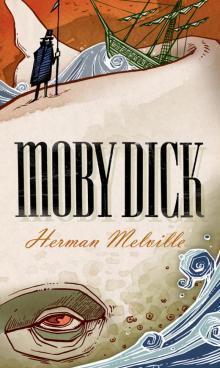 Moby Dick; Or, The Whale
Moby Dick; Or, The Whale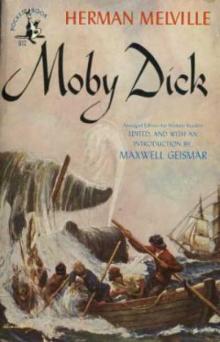 Moby Dick
Moby Dick Benito Cereno and Bartleby the Scrivener
Benito Cereno and Bartleby the Scrivener Israel Potter: His Fifty Years of Exile (Annotated Edition)
Israel Potter: His Fifty Years of Exile (Annotated Edition)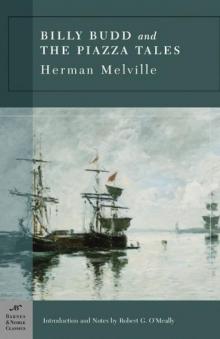 Billy Budd and the Piazza Tales
Billy Budd and the Piazza Tales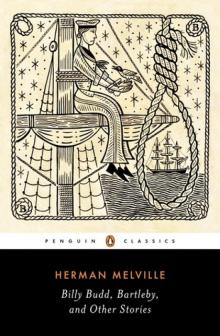 Billy Budd, Bartleby, and Other Stories
Billy Budd, Bartleby, and Other Stories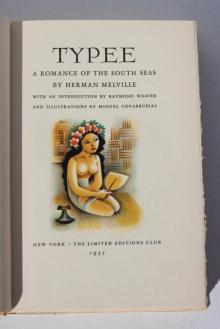 Typee: A Romance of the South Seas
Typee: A Romance of the South Seas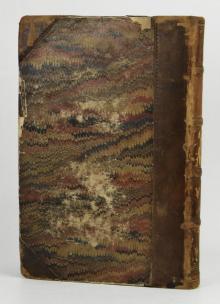 Omoo: Adventures in the South Seas
Omoo: Adventures in the South Seas White Jacket; Or, The World on a Man-of-War
White Jacket; Or, The World on a Man-of-War Redburn. His First Voyage
Redburn. His First Voyage Mardi: and A Voyage Thither, Vol. II
Mardi: and A Voyage Thither, Vol. II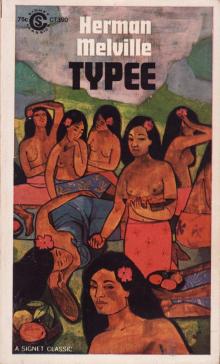 Typee
Typee The Paradise of Bachelors and the Tartarus of Maids
The Paradise of Bachelors and the Tartarus of Maids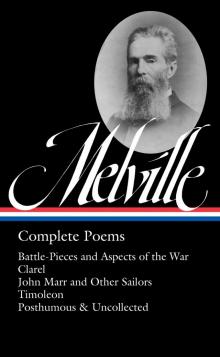 Herman Melville- Complete Poems
Herman Melville- Complete Poems Bartleby and Benito Cereno
Bartleby and Benito Cereno Moby-Dick (Barnes & Noble Classics Series)
Moby-Dick (Barnes & Noble Classics Series)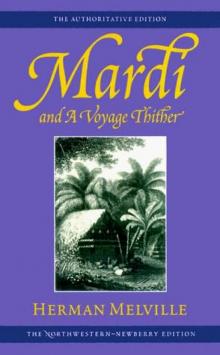 Mardi and a Voyage Thither
Mardi and a Voyage Thither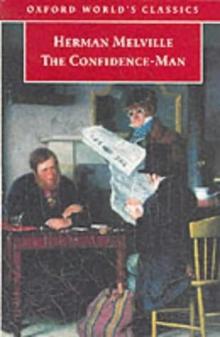 The Confidence-Man
The Confidence-Man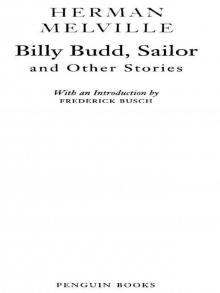 Billy Budd and Other Stories
Billy Budd and Other Stories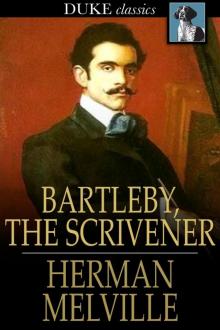 Bartleby the Scrivener
Bartleby the Scrivener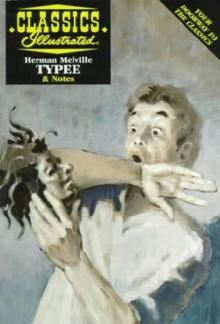 Typee: A Romance of the South Sea
Typee: A Romance of the South Sea I and My Chimney
I and My Chimney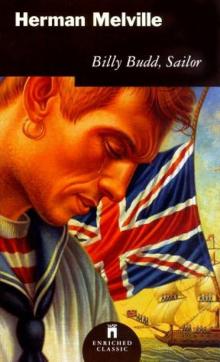 Billy Budd
Billy Budd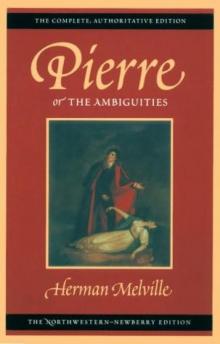 Pierre, Or the Ambiguities
Pierre, Or the Ambiguities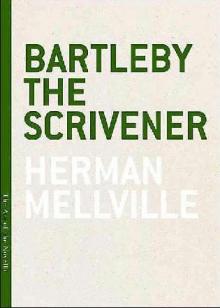 Bartleby, The Scrivener A Story of Wall-Street
Bartleby, The Scrivener A Story of Wall-Street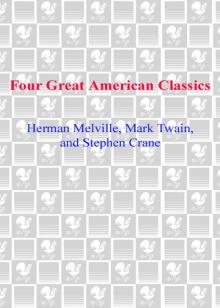 Four Great American Classics
Four Great American Classics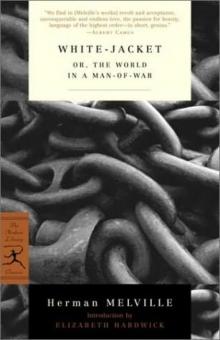 White Jacket or, The World on a Man-of-War
White Jacket or, The World on a Man-of-War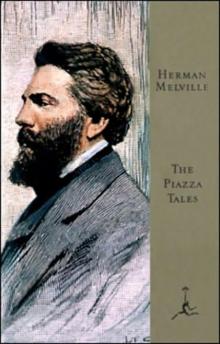 The Piazza Tales
The Piazza Tales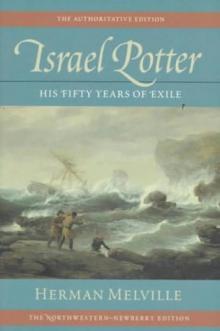 Israel Potter. Fifty Years of Exile
Israel Potter. Fifty Years of Exile